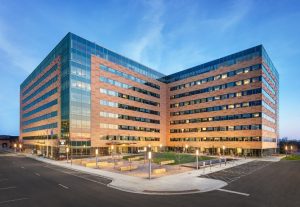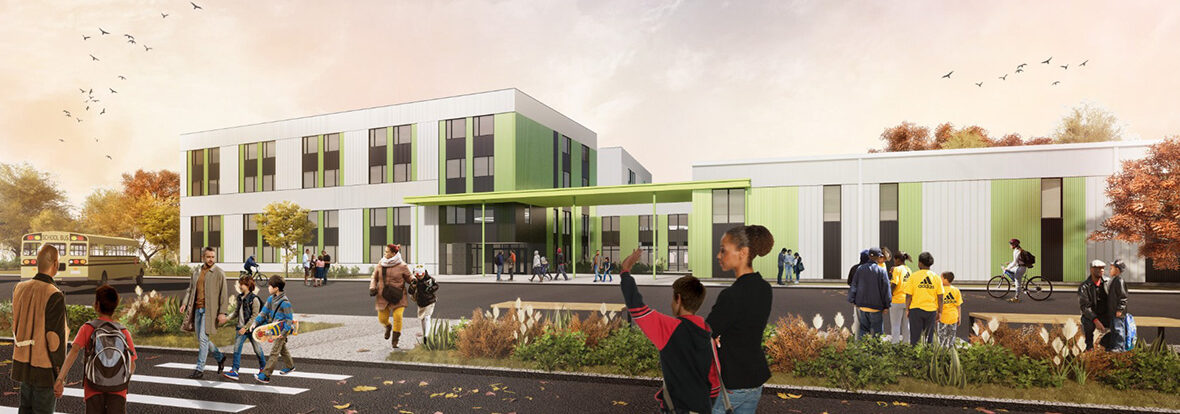As state and local economies reopen, government and quasi-government officials at every level are facing some of the largest budget deficits in generations. Adding to that, there are mounting capital investment needs to ensure local economies rebound and that students get back into modern classrooms and campuses. Policy makers and administrators alike are increasingly looking to the private sector to develop solutions together.
One tool used in nearly every corner of the social infrastructure space–which we at Gilbane define as K-12 Educational facilities, Higher Education buildings, Government (including civic, air, public safety, etc.) facilities and Healthcare assets– are public private partnerships (“P3s”). In short, P3s leverage the public sector’s ability to—identify and understand the need of its constituents–and marries it with the private sector’s project delivery to meet those identified needs. Simply put, P3s make up at least two pieces of the Design-Build-Finance-Operate-Maintain (or “DBFOM”) spectrum. In a Design-Build(DB) a public partner defines the project, providing lots technical detail/specifications on what will be built and then transfers the risk associated with delivering the project to a general contractor. In a Design-Build-Finance (DBF) , the private sector partner assumes project delivery risk and is also tasked with financing the project through completion (or beyond in some cases).
Lastly, the Design Build Finance Operate or Design Build Finance Maintain (DBFM) include a long term operating and/or life-cycle replacement component. Like any partnership, no P3 is the same, but the goal is to generate mutual benefits for stakeholders, including the broader community.
There are several primary drivers for consideration of a P3:
- Rapidly deteriorating infrastructure and facility conditions and the backlog of deferred maintenance
- Decreased funding (federal, state, and general revenues)
- Speed to market, cost efficiencies and private sector best practices
Most public entities – including cities, states and higher education and K-12 institutions, along with other institutions – can traditionally borrow at a lower ‘interest rate.’ However, the following questions should be considered when creating a real and true “value for money” analysis that quantifies the true P3 cost-savings. All questions are related to whether a public entity should directly borrow at a lower interest rate:
- Should I direct borrow? What is the larger impact on credit rating, balance sheet and future debt capacity?
- Regardless of the prospect of a lower rate, can I access the amount of capital needed, when it’s needed, to achieve my objectives and deliver comparable value or impact?
- If not, and if the self-perform cannot happen or is phased over the next 5, 10 or 20+ years, what is the lost opportunity cost (revenue, growth, ability to compete, operating efficiencies, growing deferred maintenance and ongoing lifecycle risk)?
When accounting for these and other factors within the value analysis, a P3 will typically deliver more value, transfer risk, and create sustainability beyond a basic cost of capital comparison.

Starting with the end in mind is crucial to the evaluation and proper structuring of a well-designed P3. It is imperative to ask and answer critical questions before launching into the process:
- What is the ultimate priority in seeking a P3? What are we solving for?
- Can we provide any function of DBFOM ourselves? If so, when? If not, why?
- Understanding that the public sector can typically borrow capital at a lower interest rate, can we borrow the required capital? Should we borrow the required capital?
- What risks are most important to transfer to the private sector?
- What is the internal decision-making process and what approvals are needed?
- Can we articulate the “why” behind a P3 and garner widely embraced, lasting support for its implementation?
In Q1 2021, the Higher Education and K-12 sub-sectors renewed their interest in exploring P3s with nearly 30 projects coming to market at varying stages of maturity. Pre-COVID, public and private colleges and universities alike led the social infrastructure sector in utilizing a P3 delivery model. Off the heels of closing the nation’s first full scale K-12 Educational facility P3–a 30-year $500MM DBFM for 6 schools in Prince George’s County, Maryland where Gilbane was a co-investor/developer and separately the project’s Design/Builder– school officials and administrators throughout the country are considering DBF and DBFOM solutions to accelerate the delivery of modern facilities.
While P3s in general will continue to generate mixed headlines in the media, public entities with strong leadership, a visible path to a post-COVID recovery and the willingness to address pressing stakeholder and constituent needs today should continue to consider P3s as a key part of their strategic planning process.
Learn more about Gilbane’s approach to P3 and view success stories in several different markets across the U.S. here: https://info.gilbaneco.com/p3.

